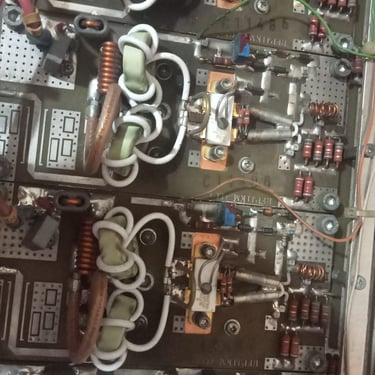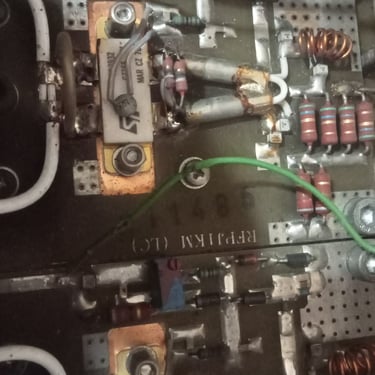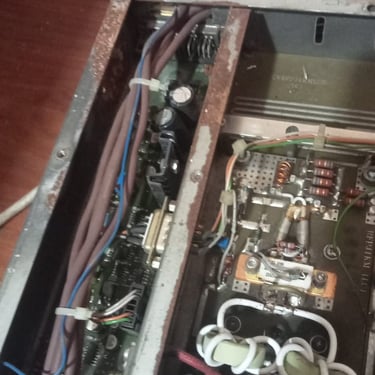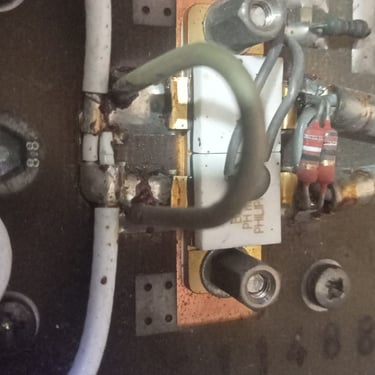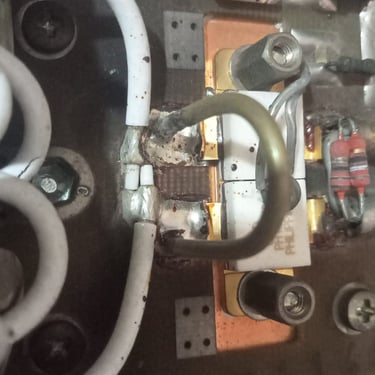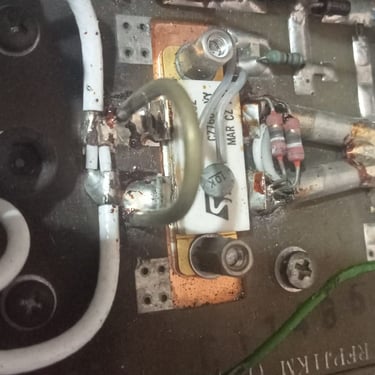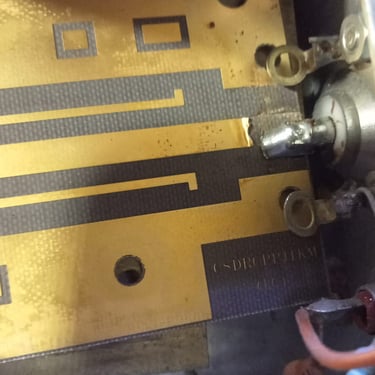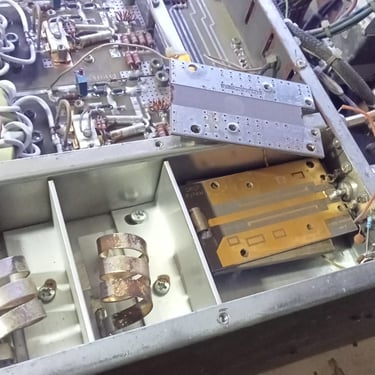Upgrading RVR 1kW FM Exciter
Upgrading RVR 1kW FM Exciter: From Traditional Transformer to RF-Compatible Switch Mode Power Supply
AYBERK BLOG
For years, my RVR 1kW FM exciter system relied on a traditional linear transformer-based power supply. While reliable, this design came with inherent limitations: excessive weight, thermal inefficiency, low power density, and poor adaptability to voltage fluctuations on the AC line. With modern switch-mode power supply (SMPS) technologies now more accessible and RF-optimized, I decided it was time to overhaul the power stage of my setup.
This article outlines the technical rationale, selection criteria, and implementation process of replacing the linear transformer with a high-efficiency switch-mode power supply tailored for RF broadcasting environments.
⚙️ Limitations of Linear Power Supplies in RF Applications
Traditional linear PSUs use bulky 50/60 Hz iron-core transformers, followed by rectification and capacitive filtering. While simple and robust, they suffer from:
Heavy and voluminous form factor
Thermal inefficiencies, typically 60–70% efficiency range
Slow transient response under dynamic RF load conditions
Minimal regulation capabilities under fluctuating mains voltage
Passive cooling dependency, leading to hot-spot issues and long-term reliability concerns
In broadcast transmitters, especially where mobility, uptime, and thermal management are critical, these drawbacks become increasingly problematic.
⚡ Why Switch Mode Power Supplies Are Superior for RF Broadcasting
SMPS designs operate by rectifying AC input to DC and switching it at high frequencies (typically 50–200 kHz) through a compact transformer using PWM control. The advantages are significant:
✅ High efficiency (85–95%)
✅ Compact and lightweight form factor
✅ Fast transient response and tight voltage regulation
✅ Wide input voltage tolerance, often with Active PFC
✅ Lower heat output, reducing the need for bulky heatsinks or fans
For RF exciter systems, these benefits translate to increased performance, portability, and robustness.
📡 Choosing an RF-Compatible SMPS & Managing EMI
Switching power supplies inherently generate high-frequency noise due to their rapid switching characteristics. In RF-sensitive environments, this can lead to EMI (Electromagnetic Interference) that degrades exciter performance. Here's how I mitigated these risks:
Selected an industrial-grade, EMI-compliant SMPS (with CE/FCC certification)
Added differential and common-mode filtering at the output stage using LC networks
Used ferrite beads and bypass capacitors on power lines entering the exciter
Implemented star-ground topology with low-impedance RF grounding paths
Physically isolated the SMPS chassis from sensitive audio and RF signal paths
Additionally, placing shielded cables, grounding the cabinet correctly, and ensuring low loop area in DC lines helped reduce conducted and radiated EMI.
🛠️ System Integration Overview
Here’s a breakdown of the actual implementation:
ParameterDescriptionInput Voltage180–265 VAC, Active PFC (Power Factor > 0.95)Output Voltage48 VDC @ 25 A (1.2 kW nominal)TopologyHalf-Bridge LLC Resonant + Synchronous RectificationProtectionsOVP, OCP, OTP, SCPCoolingSmart fan control + Aluminum heatsinkFilteringLow ESR electrolytic + film caps + EMI chokes
I also added a TVS diode array and NTC thermistor at the output stage to handle transient surges and inrush currents. Output ripple and noise remained within ±1% under full load, verified with a high-bandwidth oscilloscope.
📈 Performance Gains Observed
Post-upgrade, the exciter’s overall stability and thermal profile improved significantly:
🔹 Tighter voltage regulation under dynamic RF load changes
🔹 Reduced system temperature, improving component longevity
🔹 No measurable RF drift or modulation artifacts caused by power instability
🔹 Improved power factor and reduced line current THD
🔹 Lower electromagnetic noise floor, verified via SDR spectrum analysis
Thanks to the lower heat footprint, the cooling fan cycle time was reduced, resulting in quieter operation and less dust accumulation.
🧠 Conclusion
Switching from a linear transformer to a switch-mode PSU in an FM broadcast exciter is not just a modernization—it’s a strategic upgrade. While careful EMI management is essential, the benefits in efficiency, thermal stability, and physical footprint are undeniable. For field-deployable transmitters or energy-conscious setups, SMPS technology is the future.
Let me know if you'd like this turned into a visual blog post, PDF whitepaper, or if you want to add schematics, oscilloscope captures, or specific SMPS model recommendations.
